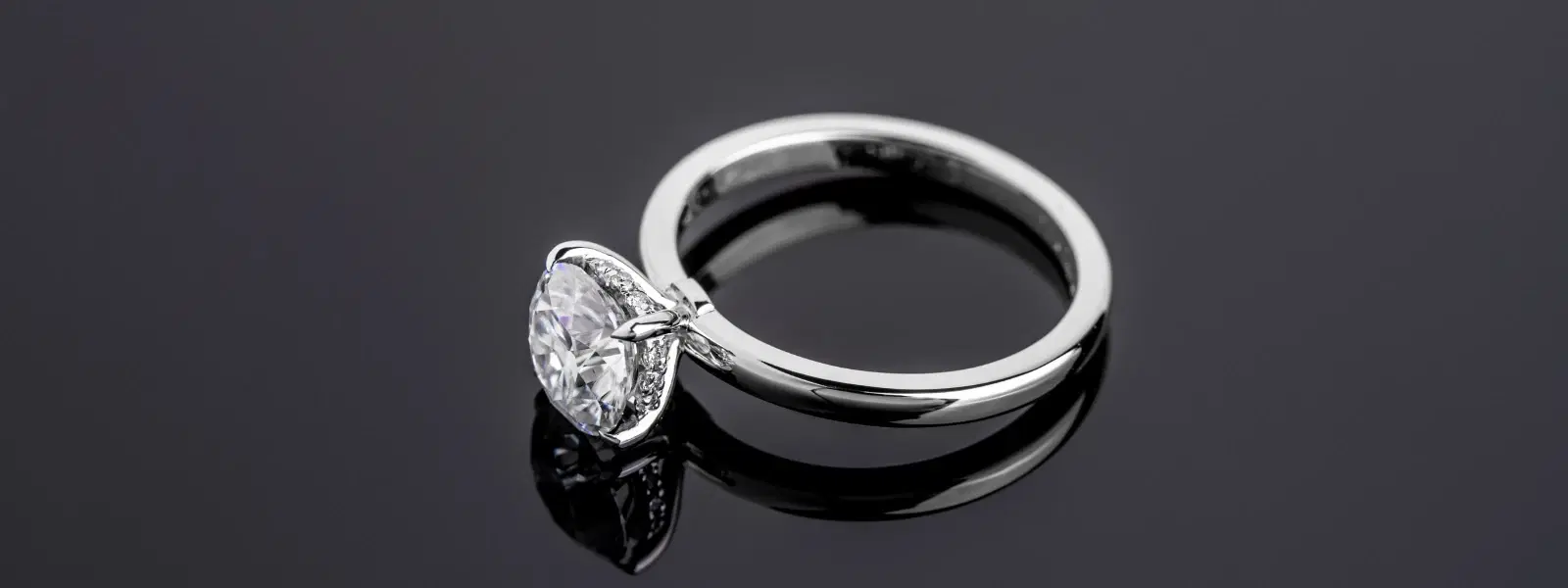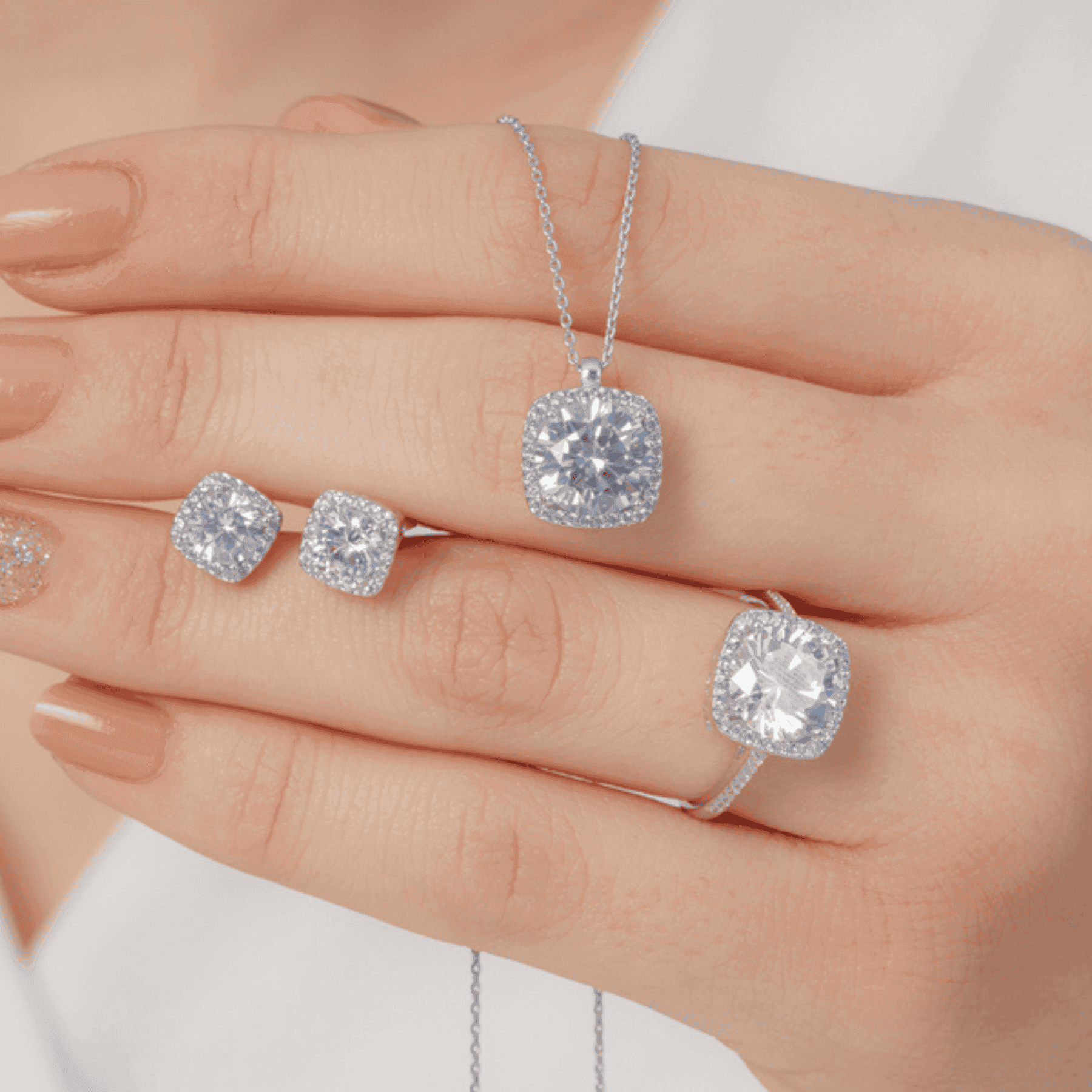
Watches & Jewellery
•05 min read

Jewelry enthusiasts often face the dilemma of choosing between platinum and white gold. In this guide, we break down the differences in durability, longevity, and care between these two exquisite metals. By reading on, you'll discover how a platinum vs white gold durability comparison can help you choose the best metal for your lifestyle, whether you're considering rings, watches, or special occasion pieces. Jewelry is more than an accessory—it's a reflection of your identity and style, and the metal you choose plays a key role in expressing your personality.
Platinum is a naturally occurring precious metal known for its rarity and density. Its inherent strength makes it an ideal choice for jewelry that stands the test of time. Since it is hypoallergenic and does not require additional plating, platinum offers a naturally white sheen that appeals to those who value authenticity and durability. This quality also contributes to what many admire as platinum jewelry longevity, making it perfect for daily wear and heirloom pieces.
White gold is an alloy, typically crafted by blending gold with metals such as palladium or nickel to achieve its white appearance. A layer of rhodium plating is added to enhance its shine and protect its surface. While white gold is more affordable compared to platinum, it often requires periodic maintenance. Attention to white gold scratch resistance and white gold tarnish prevention helps maintain its allure over time, ensuring you enjoy a refined look with proper care.
A key aspect of alternating between platinum and white gold comes down to their durability. Platinum is denser and exhibits exceptional strength in jewelry, making it resistant to wear and tear. In a platinum vs white gold comparison, the benefits of platinum become clear as it withstands daily use without significant damage. On the other hand, white gold may offer a similar aesthetic appeal, but its need for periodic re-plating reflects its susceptibility to scratches. Transitioning to the next section, let’s explore how these durability factors influence longevity.
One of the standout features of platinum is its longevity. When evaluating the durability of platinum rings, you'll find that this metal maintains its structure beautifully over decades. Unlike white gold, platinum does not lose material when scratched; instead, it demonstrates platinum wear and tear by displacing the surface without compromising the overall integrity. This makes platinum an excellent investment for those looking for heirloom quality.
Although white gold is designed with an initial layer of scratch resistance, its rhodium plating gradually wears off, exposing the underlying alloy. White gold maintenance tips recommend regular re-plating every 12–18 months to restore its shine and guard against tarnishing. Maintaining white gold jewelry not only uplifts its appearance but also ensures it continues to complement your style as a statement piece.

When comparing platinum vs white gold for rings, the durability of platinum rings is hard to beat. They are highly durable and can manage the rigors of everyday use without significant changes. In contrast, white gold rings, while lighter, may require more frequent maintenance to maintain their pristine look. Your choice between the two should align with your lifestyle and how much time you're willing to invest in upkeep.
Choosing platinum or white gold extends beyond rings to include watches. Platinum watches are favored for their robust resistance to wear and tear and appeal to those who appreciate a substantial feel. White gold watches, offering a sleek and lighter alternative, might appeal to individuals seeking a contemporary aesthetic. However, their maintenance needs, including periodic re-plating, should be carefully considered for long-term usage.
For special occasions, the decision between platinum and white gold hinges on several factors. Platinum’s hypoallergenic nature and exceptional longevity make it a treasured choice for engagement rings and wedding bands. Meanwhile, white gold presents a cost-effective option without sacrificing the elegant white shimmer for which many search. The decision often rests on personal preference, budget, and how much care you are willing to invest in maintaining your jewelry.
Taking care of white gold is key to preserving its beauty. Avoid exposing your jewelry to harsh chemicals or abrasive surfaces to prolong the life of the precious rhodium plating. Regular maintenance, including expert-recommended re-plating every 12–18 months, is essential to keep your pieces dazzling. Additionally, storing white gold jewelry separately in a soft-lined box can protect it from inadvertent scratches incurred by contact with other metals.
Platinum stands out for requiring minimal upkeep. Its inherent durability means that routine cleaning with a mild soap solution and a soft cloth is usually sufficient to maintain its natural white sheen. Minimal maintenance coupled with platinum strength in jewelry ensures that pieces retain their beauty across years, making platinum a smart choice for those seeking a lifetime investment in style.
Controlling the environmental factors that contribute to white gold tarnishing is crucial. White gold is sensitive to moisture and humidity, and keeping it away from such conditions can prevent tarnish formation. Utilizing anti-tarnish strips or designating a special jewelry box for your white gold pieces are practical steps that serve as integral white gold maintenance tips to keep your jewelry radiant.
Insight Corner: Why Platinum Wins the Durability Contest
Did you know? Industry experts note that platinum is significantly denser than white gold, making it highly durable for everyday wear. While white gold may lose material over time due to scratches, platinum simply displaces its surface, ensuring your jewelry retains its integrity for decades.

Cost is an important factor when selecting your jewelry metal. Platinum is generally more expensive due to its rarity and density. This higher value often reflects in its superior durability and longevity, characteristics that many find beneficial in the long run. On the other hand, white gold offers a more budget-friendly alternative while still delivering a refined look, making it a popular choice for those balancing style with affordability.
When considering the long-term value of platinum jewelry, its ability to hold value over time stands out. The material’s resistance to deformation and minimal maintenance needs contribute to its enduring appeal. For many, investing in platinum is not just about aesthetics but also a commitment to a lifestyle that prioritizes durability and quality in every accessory.
Selecting between 18ct white gold and platinum can be a matter of aligning your practical needs with your style aspirations. While 18ct white gold strikes a balance between affordability and durability, it may be less suited for everyday wear without routine maintenance. In contrast, platinum proves to be an ideal choice for individuals looking for that extra assurance of reliability and resilience, particularly in pieces that see significant daily use.
Yes, platinum boasts superior longevity due to its density and resistance to wear, making it less prone to scratches and maintenance compared to white gold.
The best choice depends on your lifestyle. Platinum offers unmatched endurance and hypoallergenic properties, while white gold provides a lighter, more budget-friendly option that may require regular upkeep.
Platinum's density makes it tougher to work with, often requiring special tools and techniques during crafting and resizing.
Platinum is heavier and more expensive, which might not suit everyone, especially those who prefer lightweight or cost-effective options.
Choosing between platinum and white gold ultimately depends on your lifestyle, budget, and style preferences. Platinum offers unparalleled durability, hypoallergenic benefits, and long-lasting value, making it ideal for daily wear and cherished heirloom pieces. Meanwhile, white gold presents an affordable option with a similar elegant appeal, albeit at the cost of regular maintenance. With an understanding of the differences in durability, maintenance requirements, and pricing, you are now better equipped to select the perfect metal that reflects your identity and complements your fashion journey. Remember, jewelry is not just an accessory—it’s a powerful statement of your personality and style.